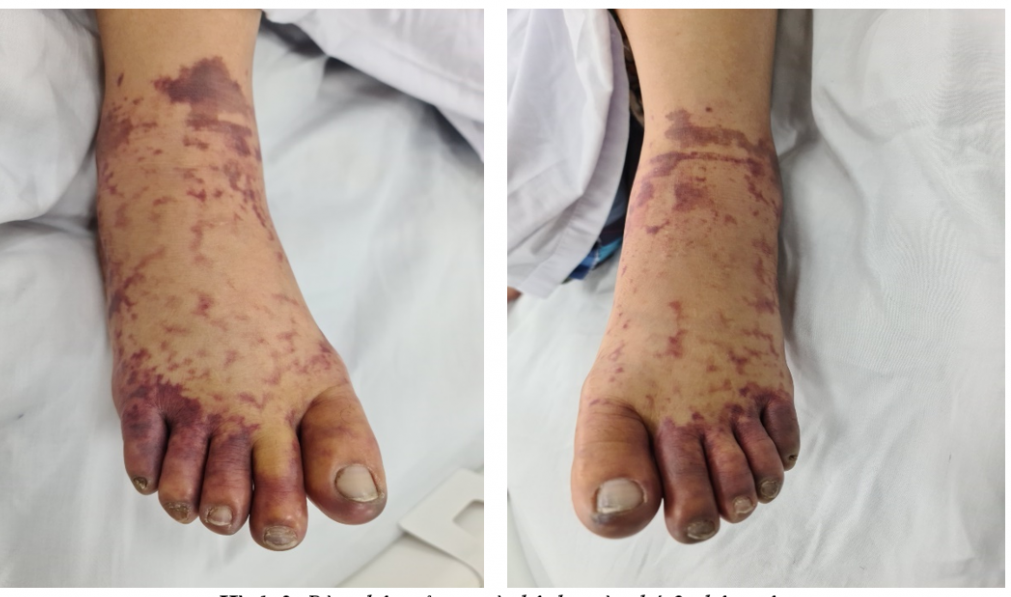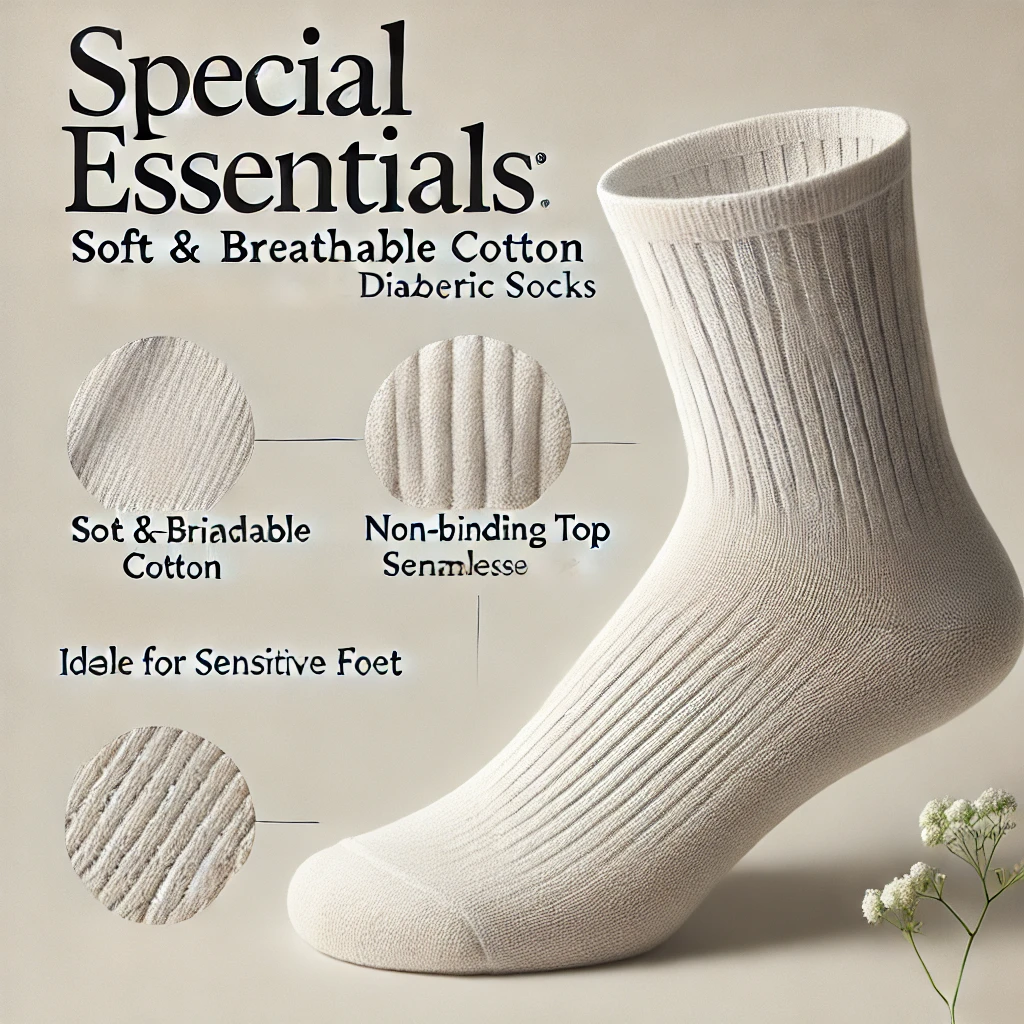Diabetic Foot Care is a crucial aspect of managing diabetes effectively, ensuring that individuals can maintain their quality of life without the complications caused by this chronic condition. The feet are susceptible to various issues due to nerve damage and poor circulation associated with diabetes. This article will delve into the importance of diabetic foot care, the best practices for maintaining healthy feet, how to recognize problems early, and what to do if you experience any concerns.
Contents
Understanding Diabetic Foot Problems
In order to effectively manage diabetic foot care, it is essential to comprehend the underlying mechanisms that lead to foot problems in those living with diabetes.
Neuropathy: The Silent Threat

Neuropathy is one of the most prevalent complications of diabetes. This condition involves nerve damage, particularly in the extremities such as hands and feet.
Nerve damage can result in a lack of sensation in the feet, making it challenging for individuals to detect injuries, blisters, or cuts. This inability to feel discomfort can lead to severe complications if left unchecked.
Moreover, neuropathy can also cause tingling, burning sensations, and pain, which can significantly impact one’s quality of life. Thus, understanding and recognizing these symptoms is vital for anyone with diabetes.
Poor Circulation: A Double-Edged Sword
Another significant concern for diabetics is impaired blood circulation. Diabetes can lead to narrowed blood vessels, reducing blood flow to the extremities.
This poor circulation can manifest as cold feet, slow-healing wounds, and an increased risk of infections. When combined with neuropathy, the danger heightens; injuries can go unnoticed and untreated, potentially leading to serious consequences like ulcers or even amputation.
Infections and Ulcers: The Ultimate Risk

The final piece of the diabetic foot care puzzle is the heightened risk of infections and ulcers. With compromised nerves and circulation, the body’s ability to fight off infections diminishes.
An untreated blister or sore can quickly develop into an ulcer, requiring medical intervention. Recognizing the signs of infection, such as increased redness, swelling, or discharge, can make a significant difference in outcomes.
Being aware of these challenges helps underscore the importance of proactive foot care routines and regular check-ups with healthcare providers.
Best Practices for Diabetic Foot Care
Establishing a daily routine that prioritizes foot health is essential for diabetics.
Daily Inspection: Your Best Defense
One of the most efficient ways to ensure foot health is through regular self-examinations.
It’s recommended to inspect your feet daily, checking for cuts, blisters, redness, and swelling. Pay special attention to areas between the toes, the heels, and the soles of the feet where injuries may not be immediately apparent.
Using a mirror can help to see hard-to-reach areas. If you notice anything unusual during these inspections, consult your healthcare provider promptly.
Proper Hygiene: Keep It Clean
Maintaining proper hygiene is another cornerstone of diabetic foot care.
It’s crucial to wash your feet daily with mild soap and warm water. After washing, make sure to dry your feet thoroughly, especially between the toes, to prevent fungal infections.
Keeping your toenails trimmed straight across can help avoid ingrown toenails, and moisturizing the skin can prevent cracks and dryness, but be careful not to apply cream between the toes.
Footwear: Choose Wisely
Footwear plays a critical role in overall foot health for individuals with diabetes.

Wearing well-fitting shoes that provide adequate support can help alleviate pressure points and minimize the risk of injuries. Consider custom orthotics if you have unique foot shape or needs.
Avoid walking barefoot, even indoors, as this increases the chances of stepping on sharp objects or experiencing other foot injuries. Additionally, wearing clean, moisture-wicking socks can enhance comfort and prevent blisters.
Regular Healthcare Visits: Stay Ahead of Issues
Regular visits to a podiatrist or healthcare provider specializing in diabetic foot care should become part of your routine.
These professionals can offer tailored advice, perform foot assessments, and identify potential complications before they escalate. They can also provide recommendations for specialized footwear or braces if necessary.
Taking a proactive approach to foot care can significantly reduce the risk of developing severe complications.
Recognizing Early Signs of Foot Complications
Early detection of foot issues can mitigate the risks associated with diabetic foot care.
Common Symptoms to Watch For
As someone with diabetes, being vigilant about changes in your feet is paramount.
Look out for:
- Redness or swelling: These could indicate an infection.
- Unusual warmth or coldness: Changes in temperature may signal circulation problems.
- Changes in skin texture or color: Dry, cracked skin or blueish discoloration can suggest poor blood flow.
- Wounds or sores that don’t heal: Any cut or blister that doesn’t show improvement after a few days warrants medical attention.
How to Respond
If you notice any of the aforementioned symptoms, it’s crucial to act quickly.
Contact your healthcare provider for an evaluation. They may perform diagnostic tests to assess circulation and nerve function, helping to determine the best course of action. By addressing issues early, you can significantly lower your risk of complications.
Maintaining Open Communication with Healthcare Providers
Establishing a strong relationship with your healthcare provider is pivotal.
Don’t hesitate to discuss any concerns or questions about your foot health. Regularly share updates about any changes in your feet, as this information can guide preventive measures.
By fostering open communication, you empower both yourself and your healthcare team to work proactively towards optimal diabetic foot care.
Diabetic Foot Care Techniques and Treatments
When it comes to diabetic foot care, having a toolbox of techniques and treatments at your disposal can be empowering.
Utilizing Medicinal Creams and Ointments
Various creams and ointments can provide protective barriers for feet prone to infections or injuries.
For instance, anti-fungal creams can protect against athlete’s foot, while antibacterial ointments can be applied to minor cuts and scrapes to reduce the risk of infection.
Additionally, moisturizing creams can combat dryness, promoting healthier skin. Always consult with your healthcare provider before starting any treatment regimen, ensuring it aligns with your individual needs.
Advanced Wound Care Solutions
If wounds do occur, advanced wound care solutions can facilitate healing.
Hydrocolloid dressings and specialized bandages can keep wounds moist to promote faster healing. For more severe cases, a healthcare professional may recommend specialized treatment plans or referral to a wound care center.
Being informed about the latest advancements in wound care can equip you to better address any issues that arise.
Alternative Therapies: Exploring Holistic Approaches
In addition to traditional medical approaches, some individuals find success with alternative therapies.
Techniques such as acupuncture, reflexology, and certain herbal remedies may complement conventional therapies and contribute to overall foot health.
However, it’s essential to discuss any alternative treatments with your healthcare provider to ensure safety and efficacy.
Staying Active: Exercise for Better Foot Health
Incorporating physical activity into your daily routine can yield numerous benefits for foot health.
Exercise promotes better circulation, reduces stress, and helps maintain a healthy weight – all critical factors in managing diabetes. Low-impact activities such as swimming, cycling, or walking can be excellent options.
Always consult with your healthcare provider before initiating any new exercise regime, as they can help tailor a program to fit your needs and abilities.
FAQs About Diabetic Foot Care
What should I do if I notice a sore on my foot?
If you discover a sore on your foot, it’s crucial to take prompt action. Clean the area gently with mild soap and water, then cover it with a sterile bandage. Monitor the sore closely, and consult your healthcare provider if there are any signs of infection, such as increased redness or pus.
How often should I check my feet?
Daily foot checks are advisable for individuals with diabetes. Inspect your feet each morning for cuts, blisters, redness, or any other abnormalities. If you notice anything unusual, seek medical attention.
What type of shoes should I wear?
Opt for well-fitting shoes that provide adequate arch support and cushioning. Avoid high heels and narrow shoes, as they can create pressure points. You may also wish to consider custom orthotics if you have specific foot conditions.
Should I use lotion on my feet?
Yes, using moisturizer can help keep your feet hydrated and prevent cracks. However, avoid applying lotion between your toes, as excess moisture can lead to fungal infections.
Are there any foods that can help improve foot health?
A balanced diet rich in vitamins and minerals can improve overall circulation and nerve function, benefitting foot health. Foods high in omega-3 fatty acids, antioxidants, and fiber are particularly beneficial.
Conclusion
Proper diabetic foot care is essential for those living with diabetes. By understanding the risks, practicing daily foot inspections, maintaining hygiene, and choosing appropriate footwear, individuals can significantly reduce the likelihood of complications. Additionally, recognizing early signs of trouble and establishing strong communication with healthcare providers can empower patients to take control of their foot health. Remember that a proactive approach, intertwined with education and awareness, can lead to a fulfilling life despite the challenges posed by diabetes. Regular assessment and adopting comprehensive care techniques are instrumental in paving the way for a healthier future.





